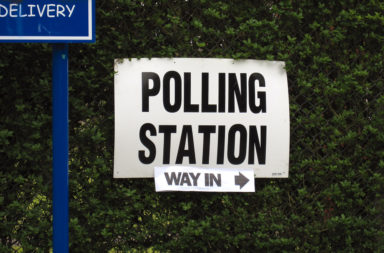On Monday, House Republicans released long-awaited healthcare legislation to repeal and replace the Affordable Care Act, also known as Obamacare. The new bill, called the American Health Care Act was developed in conjunction with the White House and Senate Republicans.
It looks like it is much less of a repeal than it is a repair, which although might be damaging to Paul Ryan’s ego, is the best thing for the country.
Though it is still not clear how many people it will cover, and how much it will cost.
Likely that it will cover fewer people than the ACA, and since the Congressional Budget Office has not yet scored the legislation, its cost is undetermined.
- Some signature features of the ACA have been removed immediately including the tax on people who do not themselves purchase healthcare.
- Medicaid expansion is kept, for now.
- New plan benefits those who are healthy and rich, and disadvantages those who are sick and poor.
- Bill is more similar to Obamacare than previous drafts.
The debate, starting in House committees this week, is a remarkable moment in government health-care policymaking. There is no precedent for Congress to reverse a major program of social benefits once it has taken effect and reached millions of Americans.
Still have not seen an official version of the House Obamacare replacement bill, but from media reports this sure looks like Obamacare Lite!
— Senator Rand Paul (@RandPaul) March 6, 2017
Four key Republican senators, all from states that opted to expand Medicaid under the ACA, said they would oppose any new plan that would leave millions of Americans uninsured.
“We will not support a plan that does not include stability for Medicaid expansion populations or flexibility for states,” Sens. Rob Portman (Ohio), Shelley Moore Capito (W.Va.), Cory Gardner (Colo.) and Lisa Murkowski (Alaska) wrote in a letter to Senate Majority Leader Mitch McConnell (R-Ky.).
So far Democrats have given no indication that they are willing to work with the republicans on the new plan, with top party leaders saying it is a betrayal of everyday Americans. “Trumpcare doesn’t replace the Affordable Care Act, it forces millions of Americans to pay more for less care,” said Senate Minority Leader Charles E. Schumer (D-N.Y.).
While the number of Americans who can afford health insurance has never been as important for Republicans as it has been for Democrats, President Trump has made clear that he is sensitive to any changes that would strand large numbers of people who gained coverage under the ACA.
Although one Republican Rep. Jason Chaffetz has an idea as to how low income families could afford the new healthcare: don’t buy an iPhone. “We’re getting rid of the individual mandate. We’re getting rid of those things that people said that they don’t want. And you know what, Americans have choices,” Chaffetz, of Utah, said Tuesday on CNN’s “New Day.” “And they’ve got to make a choice. And so maybe, rather than getting that new iPhone that they just love and they want to spend hundreds of dollars on, maybe they should invest in their own healthcare.”
GOP Rep. Chaffetz: Americans may need to choose between “new iphone… they just love” and investing in health care https://t.co/5Hxwn2uOl5
— New Day (@NewDay) March 7, 2017
Problem is, individual premiums now cost an annual average of $6,435, according to 2016 data from the Henry J. Kaiser Family Foundation, a nonprofit that tracks healthcare issues.
What is being repealed?
The individual mandate. The ACA requires people who can afford health insurance to buy it or face tax penalties otherwise, aiming to keep insurance affordable for those who are old or sick.
The new bill eliminates this mandate, getting rid of any penalty. This means that healthy people might be less inclined to purchase insurance, which would drive up the price for those who need it.
Employer mandate. The ACA required large companies to provide affordable insurance to employees or face financial penalties. This is now eliminated.
Out of pocket subsidies. Under the ACA, the federal government provided tax credits to help some people pay deductibles and co-payments. This cost-sharing item will finish in 2020.
What is being changed?
Premium subsidies. Under the ACA, the federal government provided tax credits to middle-income Americans on a sliding scale according to income. Now the subsidies will be distributed according to age.
Medicaid expansion. 31 states expanded Medicaid coverage under the ACA, this will stay in place until 2020.
Health savings account. Under the current law, in 2017, an individual can put $3,400 and a family $6,750 into a tax-free health savings account. This has now been increased and lets spouses contribute also to $6,550 and $13,100 respectively.
Restrictions on charging more for older people. The ACA deemed that plans can charge their oldest customers only three times the price charged to their youngest ones. This has now been expanded to five times and states have the option to set their own limits.
What has been kept?
Dependent coverage. Children can still stay on their parents’ insurance policies until age 26.
Pre-existing conditions policy. ACA requires insurers to cover people regardless of pre-existing medical conditions, this remains in tact.
Essential health benefits. All insurers must continue to provide 10 essential health benefits including maternity care and preventative services.
Prohibitions on annual and lifetime limits. Insurers are still not allowed to set a limit on how much they have to pay to cover someone.
Obamacare 2.0 https://t.co/p0zKkMD3UT
— Justin Amash (@justinamash) March 6, 2017




